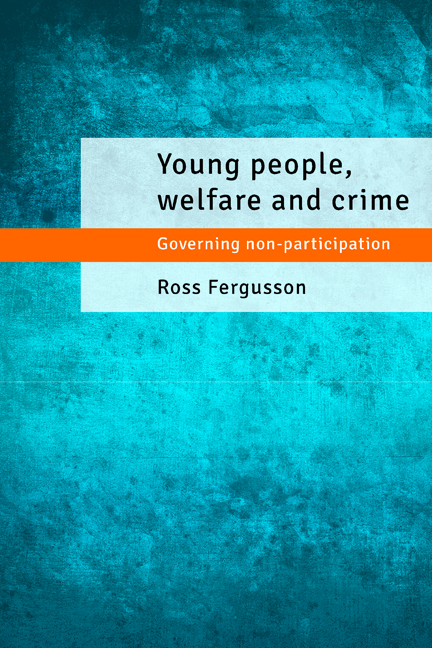Book contents
- Frontmatter
- Dedication
- Contents
- Detailed contents
- List of figures and tables
- List of abbreviations
- About the author
- Acknowledgements
- Part One The crisis of non-participation
- Part Two Work, welfare and crime: research and policy
- Part Three Theorising non-participation
- Part Four Criminalising non-participation
- References
- Copyright material
- Index
Seven - Theorising the non-participation-crime relationship
Published online by Cambridge University Press: 01 September 2022
- Frontmatter
- Dedication
- Contents
- Detailed contents
- List of figures and tables
- List of abbreviations
- About the author
- Acknowledgements
- Part One The crisis of non-participation
- Part Two Work, welfare and crime: research and policy
- Part Three Theorising non-participation
- Part Four Criminalising non-participation
- References
- Copyright material
- Index
Summary
Since crime does not exist as a stable entity, the crime concept is well suited to all sorts of control purposes. It is like a sponge. The term can absorb a lot of acts – and people – when external circumstances make that useful. But it can also be brought to reduce its content, whenever suitable for those with a hand on the sponge. This understanding opens up for new questions. It opens up for a discussion of when enough is enough. It paves the way for a discussion of what is a suitable amount of crime.
Nils Christie (2002) A suitable amount of crime, pp ix-xIntroduction
This chapter explores the complementary possibilities of the work of Habermas and Tyler for reinterpreting non-participation and its relationship to crime among young people. It begins by reflecting on how empirical work on that relationship has clustered around instrumental and expressive motivations for crime, and on how aspects of Habermas’ and Tyler’s analyses add to understanding it. The possibilities and limitations of these approaches are then tested by two case studies that highlight complexities that both utilise and test the scope of Habermas’ and Tyler’s analyses. Sections 2 and 3 then consider how theories of governance and theories of ‘governing through crime’ that utilise and extend Habermas’ and Tyler’s approaches can provide a reinterpretation of the non-participation‒crime relationship.
The majority of explorations of the non-participation‒crime relationship have produced findings and analyses influenced by or directly aligned with instrumental or expressive motivations. And, as the Interlude between Parts Two and Three made clear, elements of these motivations are more readily associated either with nomothetic levels of analysis and exogenous factors of analysis, or with idiographic levels of analysis and endogenous factors of analysis.
Table 7.1 builds on these distinctions, and other schematic distinctions employed in earlier chapters. It is primarily intended to provide an overview of the range of distinctions that have been made up to this point, to draw attention to a number of congruences that have been identified in previous chapters, and to highlight some of the possible associations they might imply. Beginning with the ‘levels/factors of analysis’ distinctions schematised in the Table in the Interlude, it maps them against the two dominant analytical traditions of youth studies, the theoretical approaches of Habermas and Tyler, and the dominant policy responses that emerge from and are associated with both.
- Type
- Chapter
- Information
- Young People, Welfare and CrimeGoverning Non-Participation, pp. 169 - 190Publisher: Bristol University PressPrint publication year: 2016



